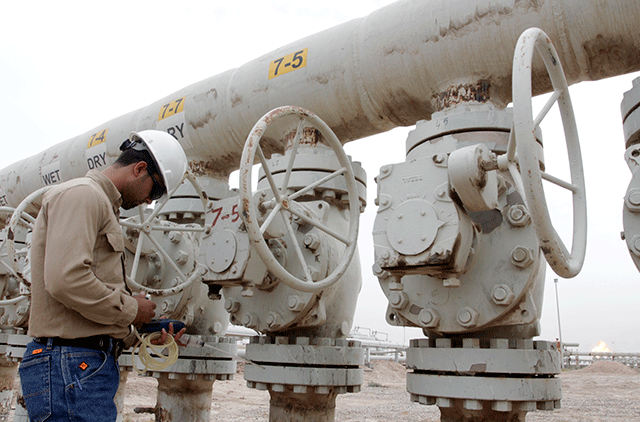
Dubai: Brent crude, a global benchmark for oil prices, is expected to stabilise at $85 (Dh312) a barrel this week, experts say, following last week’s four-year low amid weaker global demand and market oversupply.
The global benchmark has tumbled since June — losing nearly a fifth of its value — despite geopolitical concerns in Iraq over control of its oil fields with terrorist group Daesh controlling large swaths of the country as well as ongoing tensions between Ukraine and Russia.
“It’s obvious the rising supply and weaker demand is overpowering the tensions in the Middle East and Ukraine,” said Alp Eke, senior economist at National Bank of Abu Dhabi (NBAD), by phone on Sunday.
Eke added that Brent is likely to “remain as it is” this week at $85 a barrel.
Brent crude for December rose above $86 a barrel on Friday, bouncing back from $82.93 earlier in the week.
Arjuna Mahendran, Chief Investment Officer, Wealth Management Division at Emirates NBD, said by phone that recent economic data out of Germany and the United States had shaken Brent prices last week.
German sentiment fell to minus 3.6 in October from 6.9 in September on the ZEW Centre for European Economic Research’s index of investor and analyst expectations. US data showed retail sales slid 0.3 per cent in September.
“Weakness in demand justifies current prices,” Mahendran said.
Trim production
Oversupply and weaker economic demand out of China has sent prices spiralling in the second half down from this year’s peak of above $115 in June.
Market watchers had thought Saudi Arabia and the Organisation of Petroleum Exporting Countries (Opec) would trim production to prop up prices. However, last month Saudi Arabia increased production by 100,000 barrels a day, while Libyan production has jumped by more than 500,000 barrels a day in recent months.
“The Saudis are not really a big price setter any more. You have the United States, Russia, Iraq and Libya — there is a lot of oil on the market,” UK-based Shwan Zulal, an associate fellow at King’s College and the director of London-based Carduchi Consulting, said by phone.
Last week, Saudi Arabia, along with fellow Opec members Kuwait, Iraq, Iran and the UAE cut prices to European and Asian buyers amid heated global competition.
Zulal said after four to five “very good bumper years” of stable $100 a barrel that the market is now saying those days are over.
“You can see we are going to stay at the $85 to $90 a barrel for the foreseeable future,” he said.
Mahendran said he thinks “prices are probably close to the bottom” and that Brent will stabilise between $83 and $85 this week.
“There is no reason for prices to fall significantly below these levels,” he said.












